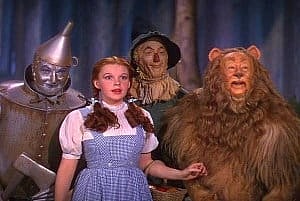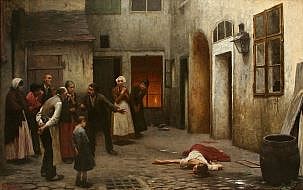7 Techniques from Creative Writing You Can Use to Improve Your Essays

You wouldn’t have thought that essays have much in common with creative writing.
Creative writing, by definition, involves being ‘creative’: making things up, letting your imagination run wild. Essays are about being factual and objective, communicating ideas and arguments in the clearest way possible and attempting to enhance the reader’s knowledge, rather than their imagination. But while the literary devices and colourful tales we associate with creative writing are indeed out of place in an essay, these two very different kinds of writing actually have a few similarities. Above all, they’re both meant to be read by other people, and that means that they need to sustain the reader’s interest. So, are there any writing techniques you can borrow from creative writing to help make your essays more interesting and original? Yes there are, and in this article, we’re going to show you how. Before we start, if you’re interested in attending a summer school to help develop these skills, click the link.
1. Think about your reader

With creative writing, as with any kind of writing, your reader is your most important consideration. You need to know and understand whom you’re writing for if you’re to do a good job of keeping them interested. Let’s think for a moment about the kind of person you’re writing for when you’re writing an essay and what you need to do to write specifically for them:
- Teachers or university lecturers – they’re going to be marking your essay, so it needs to answer the question effectively.
- They’ve set the question and they probably have a pretty good idea of how you’re going to answer it – so be original and unpredictable; catch them by surprise with an unusual approach or structure.
- They’re going to be reading many other responses to the same question – so they may well be bored by the time they get to yours. Keep them interested!
- They’re probably going to be pressed for time – so they won’t have time to reread badly written passages to try to understand what you’re getting at. Keep your writing easy to read, succinct and to the point.
What all these points boil down to is the importance of keeping your reader interested in what you have to say. Since creative writing is all about holding the reader’s interest, there must be some lessons to be learned from it and techniques that can be applied within the more limited style constraints of the academic essay. We’ll now turn to what these are.
2. Three-act structure

The three-act structure is a writing device used extensively in modern writing, including for film and television dramas. These ‘acts’ aren’t as distinct as acts in a play, as one follows seamlessly on from another and the audience wouldn’t consciously realise that one act had ended and another began. The structure refers to a plotline that looks something like this:
- Set-up – establishes the characters, how they relate to each other, and the world they inhabit. Within this first ‘act’, a dramatic occurrence called an ‘inciting incident’ takes place (typically around 19 minutes into a film) involving the principal character. They try to deal with it, but this results in another dramatic occurrence called a ‘turning point’. This sets the scene for the rest of the story.
- Confrontation – the turning point in the previous ‘act’ becomes the central problem, which the main character attempts to resolve – usually with plenty of adversity thrown their way that hampers their efforts. In a murder mystery, for example, this act would involve the detective trying to solve the murder. The central character – with the help of supporting characters – undergoes a journey and develops their knowledge, skills or character to a sufficient degree to be able to overcome the problem.
- Resolution – the climax of the story, in which the drama reaches a peak, the problem is overcome, and loose ends are tied up.
This structure sounds all very well for made-up stories, but what has it got to do with essay-writing? The key similarities here are:
- The central argument of your essay is the equivalent of the main character.
- The essay equivalent of the set-up and resolution are the introduction and conclusion.
- The inciting incident in an essay encourages you to get to the point early on in the essay.
- The equivalent of character development in the second act is developing your argument.
- The equivalent of the supporting characters is the evidence you refer to in your essay.

So, applying the three-act structure to an essay gives you something like this:
- Set-up – the introduction. This establishes what you’re talking about, setting the scene. The ‘inciting incident’ could be the introduction of evidence that contradicts a common theory, or the highlighting of a central disagreement in how something is interpreted.
- Confrontation – you discuss the different problems surrounding the topic you’re writing about. You develop the argument using various bits of evidence, moving towards an overall conclusion.
- Resolution – the conclusion. You summarise and resolve the argument with your own opinion, by coming down on one side or the other, having weighed up the evidence you’ve discussed. You could perhaps tie up loose ends by offering an alternative explanation for evidence that doesn’t sit with your conclusion.
Using this structure keeps you focused on the central point, and stops you from waffling, because everything you write is working towards resolving your argument. The use of the inciting incident in the first ‘act’ encourages you to get to the point early on in your essay, thereby keeping the reader interested. The principles of good plot-writing are centred around the connection between different events that show cause and effect, and this central tenet of the three-act structure has obvious parallels with the way in which essays work through presenting evidence in support of arguments.
3. An attention-grabbing opening

An oft-spouted piece of advice in creative writing is to use an attention-grabbing opening. One way of doing this is to start with a ‘flashback’, which could disrupt the chronology of events by transporting the reader directly back to the midst of the action, so that the story begins with maximum excitement. In a murder mystery, for instance, the writer might skip a slow build-up and instead use the murder itself to form the opening of the novel, with the rest of the story charting the efforts of the detective to uncover the perpetrator and perhaps telling the events prior to the murder in a series of flashbacks. The same principle can be applied to essays, though it’s easier to use in some subjects than others.
To take an example, let’s say you were writing about how the First World War started. Rather than building up slowly with the various factors, an attention-grabbing opening could (briefly) describe the drama of the Battle of the Somme, perhaps citing some statistics about the number of men involved and killed, and quoting some war poetry about the horrors faced by the soldiers on the Front Line. Then, to introduce the purpose of the essay and launch into your argument about what started the war, a phrase such as, “It seems hard to imagine that all this began with…”. Alternatively, a rhetorical question: “But how did these tens of thousands of soldiers end up in the mud and horror of trench warfare? The story begins several years earlier, with…” It may not be the standard way of writing an essay, but you’ll certainly score points for originality and perhaps ruffle a few feathers.
4. Extended metaphors

Creative writing often makes use of extended metaphors. For example, when Shakespeare wrote the passage in Romeo and Juliet referring to “It is the East, and Juliet is the sun!” he was using an extended metaphor. With this in mind, it’s time to revisit a point we made in a previous article about writing more original essays, in which we argued that, rather than battling on with trying to explain a complex concept in a straightforward way, it might be easier to use an analogy to convey the meaning by drawing comparisons, which people find easier to understand. A metaphor is a kind of analogy, so the similarities with creative writing are strong here. In our previous article we used the example of radioactive decay. An analogy for this is the pressure with which water escapes from a hole in a bucket. It does so exponentially, just as radioactive substances decay exponentially. In both instances, the rate of a consumptive process depends on how much there is left of whatever is being depleted, which results in an exponential rate of decay. This concept is so much easier to explain using the analogy of water flowing from a hole in a bucket, as you give your reader something familiar to visualise in order to explain a concept with which they are unfamiliar.
5. Interesting details about setting and location

Another way of keeping your reader interested is to bring your essay to life with details about setting and location, just as creative writers do. Essays can become quite dry if you focus solely on the academic problems, but you can make them more interesting by peppering them with details. This may not work quite so well for a scientific essay, but it’s certainly relevant for some humanities subjects, in particular English literature, history and archaeology. For example, an essay about the Roman emperor Augustus could mention that he lived a famously modest lifestyle, quoting details from Roman writers and archaeological evidence that support this: Suetonius mentions his “low bed” (interesting because of what it says about accepted standards of Roman beds!) and coarse bread and cheese diet, and the relatively small and non-lavish remains of his house on the Palatine Hill in Rome back up the idea of his having lived a modest life.
Incidental details like these can actually prove to be more significant than you initially realise, and you can use them to build your argument; in the case of Augustus, for example, his modest lifestyle is particularly important when seen in the context of Rome’s troubled history with kings. As he gradually acquired more power and became Rome’s first emperor, he had to avoid coming across as being too ‘regal’, and the little details we know about his way of life are significant in light of this. So, not only have you brought your essay to life, but you’ve raised an interesting point, too.
6. Editing
Few writers get it right first time. Once you’ve written a first draft, read through it and think about whether the order of your points is optimal and whether what you’ve written actually makes sense. It’s easy in the age of computers to chop and change – you can simply copy and paste part of your essay into another part where it might fit better, and then make minor changes to your wording so that it flows. After you’ve finished editing, have a final read through and check that you’re happy with the wording. Don’t forget to proofread to ensure that your spelling and grammar is impeccable!
7. And finally… record your ideas

Creative writers swear by having a notebook with them at all times, ready to jot down any ideas that suddenly spring to mind. You can adopt the same principle for your essay-writing, because you never know when the inspiration might strike. Have a think about your essay topic when you’re out and about; you’d be surprised what occurs to you when you’re away from your normal place of study.
As you can see, there are more similarities between two apparently unrelated kinds of writing than you might have realised. It is, of course, possible to go too far with the creative writing idea when you’re essay-writing: literary devices aren’t always appropriate, and your essay still needs to retain objectivity and conform to the more formal conventions of academic writing. But there are certainly techniques to be borrowed from creative writing that will help your essays stand out from the crowd and give your teacher or lecturer a welcome break from the monotony of essay-marking.
